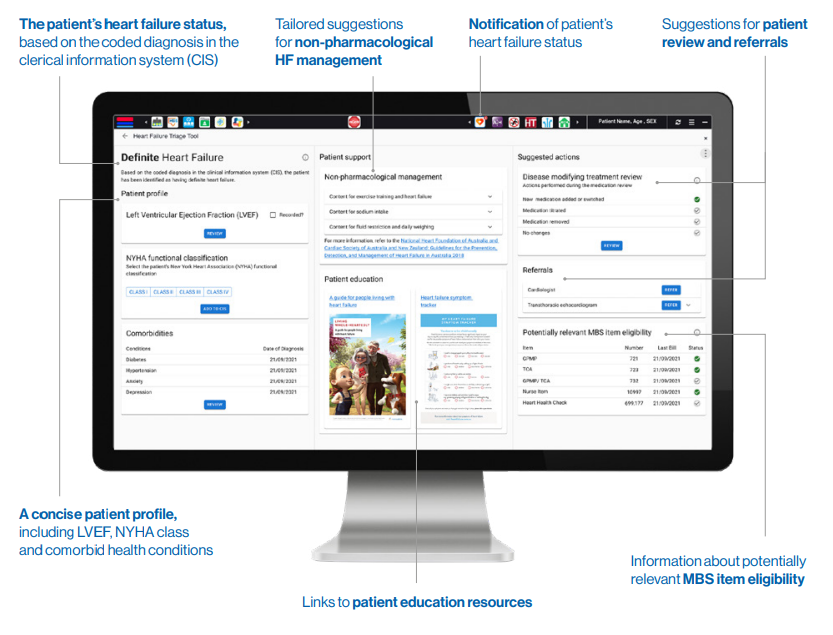Presently, there are 110,000 people living with Heart Failure1 with 173 hospitalisations per day.2 This condition accounts for 1 in 50 deaths which equates to 1 person dying of Heart Failure every 3 hours.3
Over 80% of patients identified as definite HF did not have a HF diagnosis recorded in the diagnosis section of their medical records (SHAPE, 2020).
This presents an opportunity to improve management, as classification of Heart Failure is integral to administering guideline recommended care.
Challenges
- Symptoms worsening in patients are subtle and gradual – and easily missed until patients end up in hospital.
- Many patients with HF are not optimally treated in primary care4.
- Compliance with populating medical records for HF patients is variable and often incomplete4.
- Short consultation times prevent proactive management of a complex comorbid patient.
The Heart Failure Triage Tool, developed in collaboration wtih Novartis, aims to identify patients with signs and symptoms of Definite, Probable and Possible Heart Failure, and accelerate their movement through the primary health care system towards an intervention.
The App integrates seamlessly into your workflow, and helps:
- Identify patients at risk of either Definite, Possible or Probable Heart Failure based on pre-defined patient criteria.
- Assess the patient's risk of Definite, Possible or Probable Heart Failure through a series of questions and prompts.
- Provide follow up recommendations matched to the patient's risk profile.
The Heart Failure Triage Tool is available now! Look out for the App Icon on your Topbar.
Further Resources: Find out more about the Heart Failure Triage Tool
References:
- Australian Bureau of Statistics 2018, National Health Survey 2017-18, Data customised using TableBuilder
- Australian Institute of Health and Welfare 2020, National Hospital Morbidity Database (NHMD)
- Australian Bureau of Statistics 2020, Causes of death 2019, cat. No. 3303.0, October
- Parsons et al. BMC Public Health (2020) 20:648 https://doi.org/10.1186/s12889-020-08781-8

